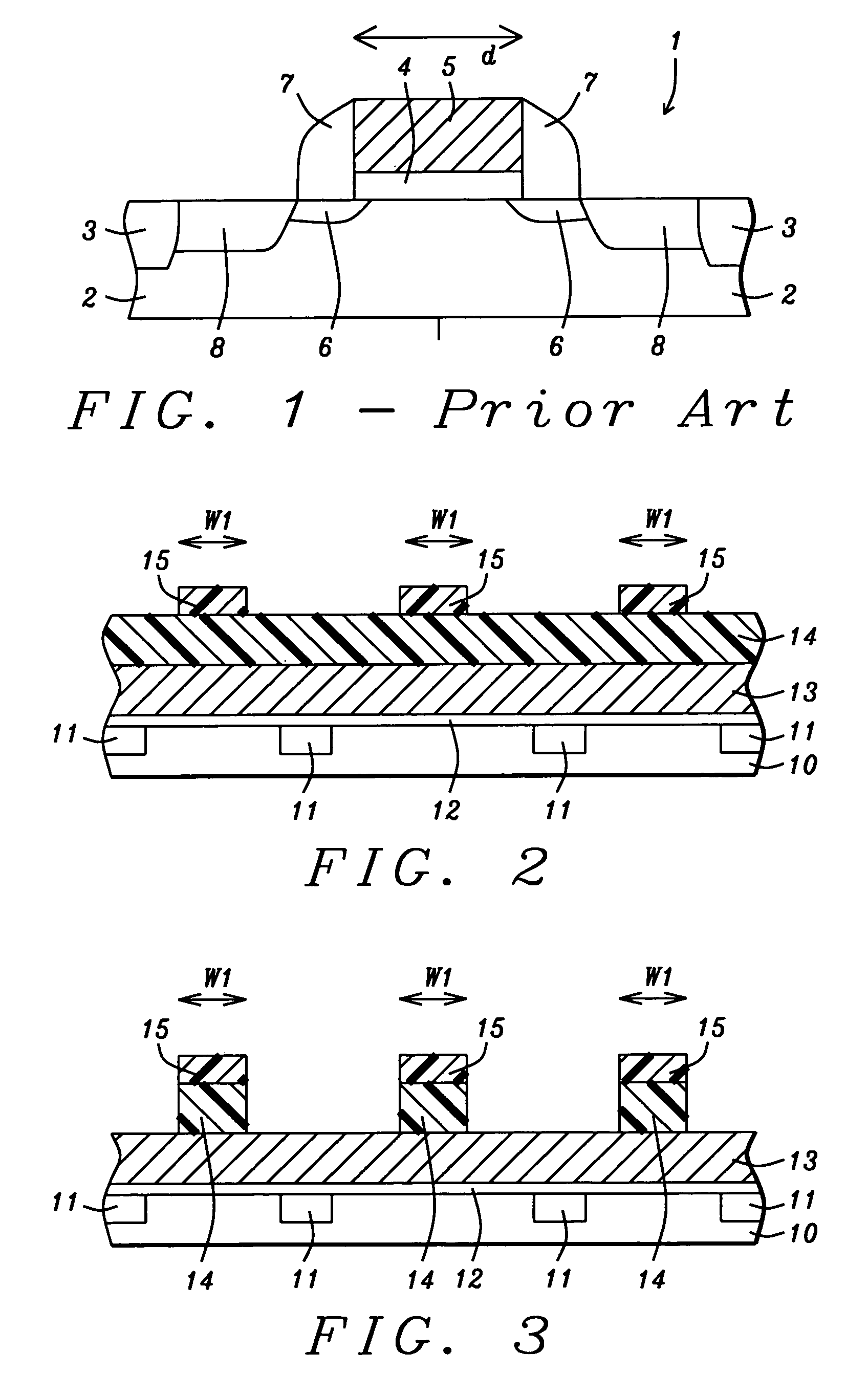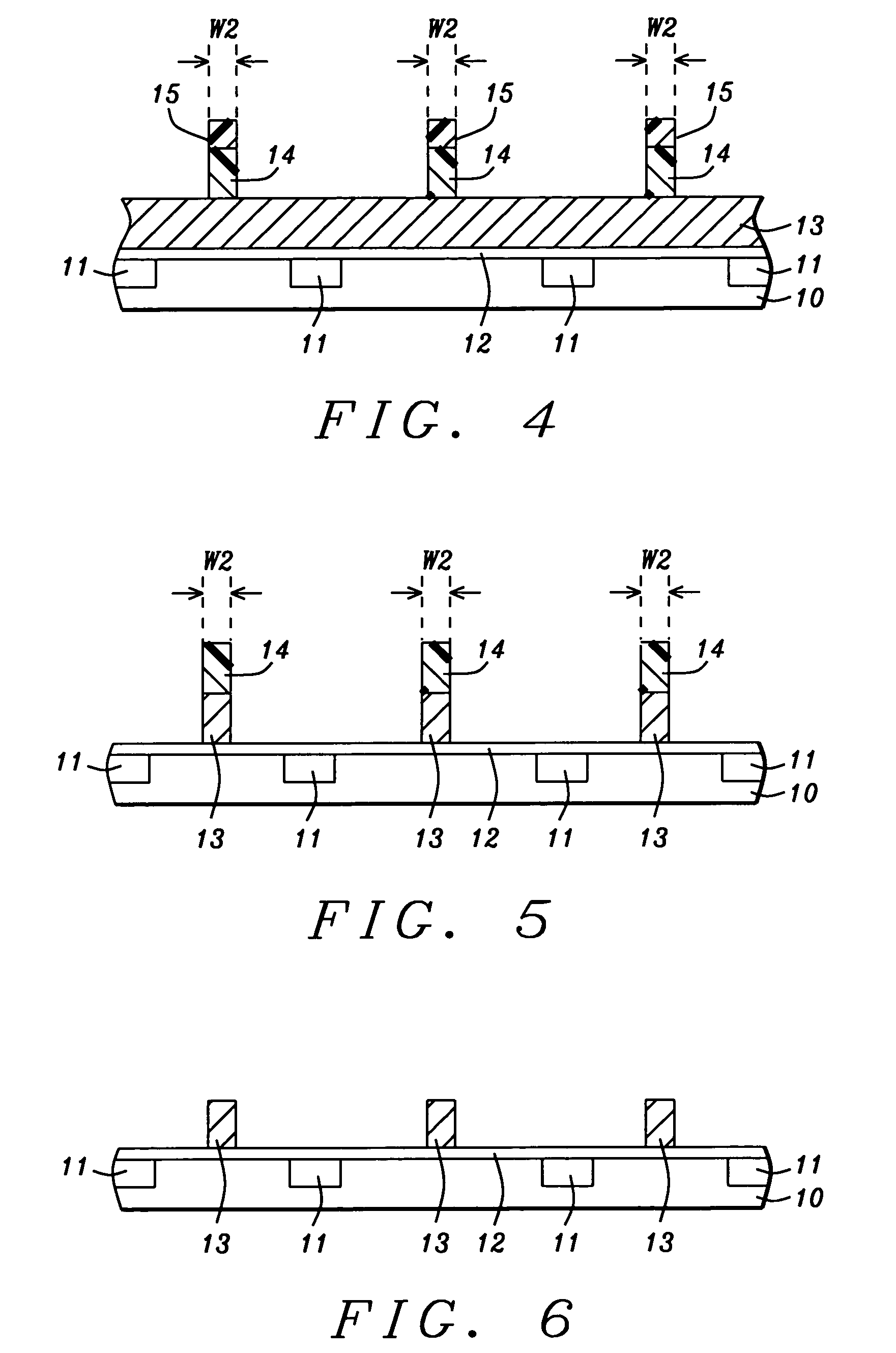Method of trimming technology
a technology of photoresist layer and gate length, applied in the direction of basic electric elements, electrical equipment, semiconductor devices, etc., can solve the problems of inability to controllably print features, inability to meet the demand for sub-100 nm gate lengths for most new devices, and inability to reliably print features in photoresist layers. achieve good gate profile control
- Summary
- Abstract
- Description
- Claims
- Application Information
AI Technical Summary
Benefits of technology
Problems solved by technology
Method used
Image
Examples
first embodiment
[0039]The first embodiment is depicted in FIGS. 2-6. Referring to FIG. 2, a substrate 10 is provided which is typically monocrystalline silicon but may be alternatively be based on silicon-germanium, silicon-on-insulator, or other semiconductor materials used in the art. Additionally, substrate 10 may be comprised of active and passive devices that are not shown in order to simplify the drawing. Isolation regions 11 which in the exemplary embodiment are STI regions are formed in the substrate 10 by conventional means and typically contain an insulating layer such as SiO2 or a low k dielectric material. Between adjacent isolation regions 11 is a p-well or an n-well (not shown) depending on whether a NMOS or a PMOS transistor is to be formed on an overlying active area.
[0040]A gate stack that includes a gate layer 13 on a gate dielectric layer 12 is formed on the substrate 10. First, a gate dielectric layer 12 with a thickness of about 5 to 100 Angstroms is formed on the substrate 10 ...
second embodiment
[0049]A second embodiment is illustrated in FIGS. 7-8. Referring to FIG. 7, a partially formed transistor that includes a substrate 10 with isolation regions 11, a gate dielectric layer 12, a gate layer 13, and an underlayer 14 is formed as described previously. A top photoresist layer 20 is coated to a thickness of about 500 to 5000 Angstroms. The photoresist layer 20 and underlayer 14 form a bilayer stack. The photoresist layer 20 is preferably a positive tone non-silicon containing photoresist which highly absorbs 157 nm or 193 nm radiation so that during a typical patternwise exposure, only a small portion of the photoresist layer near the surface of an exposed region undergoes a photoinduced reaction. It is understood that a post-exposure bake may be necessary to increase the rate of the photoinduced reaction in order to decrease process time. Alternatively, a shorter wavelength than 157 nm may be used such as a 13 nm wavelength from an EUV source to patternwise expose the phot...
PUM
 Login to View More
Login to View More Abstract
Description
Claims
Application Information
 Login to View More
Login to View More - R&D
- Intellectual Property
- Life Sciences
- Materials
- Tech Scout
- Unparalleled Data Quality
- Higher Quality Content
- 60% Fewer Hallucinations
Browse by: Latest US Patents, China's latest patents, Technical Efficacy Thesaurus, Application Domain, Technology Topic, Popular Technical Reports.
© 2025 PatSnap. All rights reserved.Legal|Privacy policy|Modern Slavery Act Transparency Statement|Sitemap|About US| Contact US: help@patsnap.com



